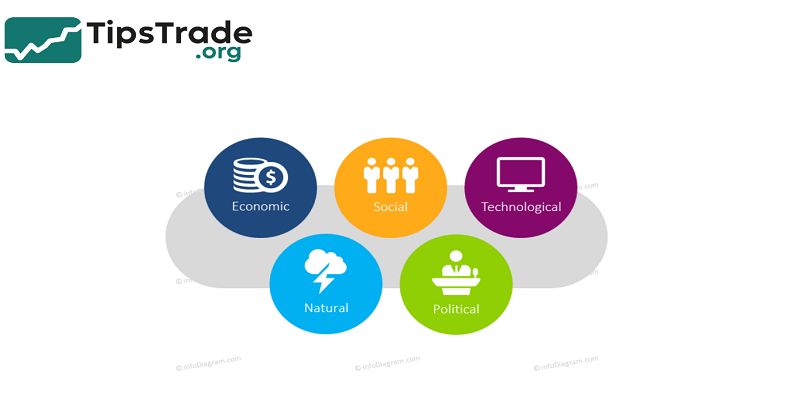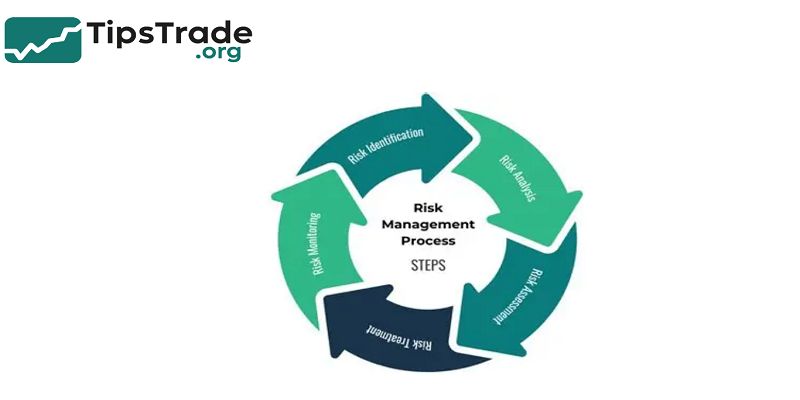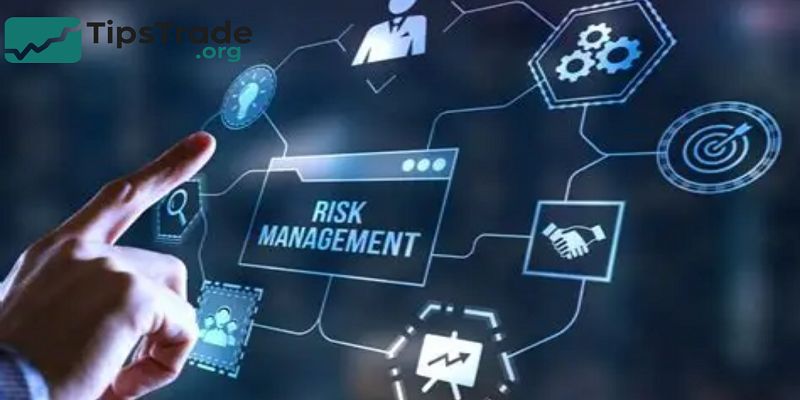Risk management is a structured process that helps organizations identify, analyze, and control potential events that may affect performance, assets, or reputation. In business and finance, uncertainty is a constant factor. Prices change, regulations evolve, technology disrupts industries, and human mistakes can happen at any moment. A strong risk management system does not eliminate all risks, but it helps leaders prepare, reduce uncertainty, and protect long-term value. Visit tipstrade.org and check out the article below for further information
What Is Risk Management?

- Risk management refers to the process of identifying, evaluating, and controlling potential threats to an organization.
- These threats can come from financial markets, internal operations, human mistakes, natural disasters, technology failures, or regulatory changes.
- The goal is simple: reduce negative impact and increase the chance of achieving business objectives.
- Most global companies use structured frameworks such as ISO 31000 or coco to guide their strategy.
- A simple example helps explain the concept. Imagine a logistics company that delivers goods nationwide.
- If fuel prices rise suddenly, transportation costs increase. If a truck breaks down, customers receive packages late.
- If a driver makes a mistake, accidents may happen.
- The company cannot remove all risks, but it can prepare: fuel hedging contracts, maintenance schedules, and driver training.
- These plans reduce losses and protect service quality.
Risk management is built on three core principles:
- Identification: understanding what could go wrong
- Assessment: measuring probability and impact
- Mitigation: taking action to reduce damage
For investors, risk management is equally important. Portfolio diversification, stop-loss orders, and asset allocation are common tools used to manage volatility.
When financial markets become unpredictable, investors with a structured risk plan usually perform better than those who rely on emotion.
In summary, risk management does not prevent uncertainty, but it transforms uncertainty into manageable decisions.
See more:
- Impact of Macroeconomic Factors on Stocks
- What is bid ask spread? Factors that influence bid ask spread
- Fundamental Analysis Stocks: Everything Investors Need to Know
- Technical Analysis for Stocks: The Complete Guide for Modern Investors
Why Risk Management Is Important
- Risk management is important because every decision in business carries uncertainty.
- A company can have strong revenue, a talented team, and advanced technology, yet still fail if risks are ignored.
- Research from PwC shows that organizations with mature risk frameworks are 3× more likely to survive market shocks and economic downturns.
- When risks are managed proactively, companies protect their assets, reputation, and long-term profitability.
- Without risk management, even a small issue can escalate into a crisis.
- For example, a supplier delay might cause production interruptions, angry customers, and higher costs.
- A cybersecurity breach can destroy years of brand trust. A compliance violation may lead to fines and legal action.
- These events are preventable when companies analyze potential threats early and prepare response plans.
- The benefit is not only protection, but also competitive advantage.
- Businesses that understand their risk landscape make faster, smarter strategic decisions.
- Investors, employees, and customers also feel safer when strong governance is in place.
Common Types of Risk

Organizations face many types of risks, but most fall into these core categories. Understanding them helps leaders choose proper tools and control strategies.
Financial Risk
- Financial risk involves losing money due to market volatility, credit defaults, inflation, currency fluctuations, or interest rate changes.
- Banks, investment funds, insurers, and corporations face financial risks every day.
- For example, when interest rates increase, loan repayments become expensive and borrowers may default.
- When exchange rates fluctuate, companies that import or export goods may experience unexpected losses.
- To manage financial risk, institutions use hedging, credit analysis, liquidity planning, and diversification.
- A portfolio manager may invest in multiple asset classes to avoid depending on one market.
- Corporations often test their financial stability through stress testing or scenario analysis, especially during uncertain periods.
- According to the World Bank, firms with financial risk control systems are less likely to collapse during recessions.
- Clear financial policies, internal controls, and transparency help companies build trust with investors.
Operational Risk
- Operational risk comes from internal processes, human errors, equipment failures, or system breakdowns.
- Even the most advanced companies face operational risks every day.
- A bank may experience ATM outages, a hospital can suffer medical equipment errors, or a food company might face contamination issues.
- These failures can lead to financial loss, customer dissatisfaction, and regulatory penalties.
- To manage operational risk, organizations build internal controls such as employee training, standard operating procedures (SOPs), data backups, and quality assurance checks.
- Technology also plays an important role. Automated monitoring, security cameras, sensor systems, and machine-learning algorithms help detect issues early.
- A real example is Toyota’s smart factory system: robots track machine activity 24/7 and notify engineers before breakdowns occur.
- By preventing errors proactively, operational risk management protects business continuity.
Market Risk
- Market risk affects companies and investors when prices of stocks, commodities, or currencies move unpredictably.
- The 2020 COVID-19 outbreak is a clear case.
- Global markets fell sharply, oil demand collapsed, airlines lost revenue, and supply chains were disrupted.
- Companies that did not have market risk strategies suffered heavy losses.
- Investors and corporations manage market risk with diversification, hedging, derivatives, and scenario planning.
- A commodity producer might use futures contracts to lock in prices.
- Investment funds may rebalance portfolios when volatility rises.
- Central banks also use monetary policies to stabilize financial markets.
- In short, market risk cannot be avoided, but it can be controlled with smart planning.
Compliance & Legal Risk
- Compliance risk occurs when organizations violate laws, regulations, or industry standards.
- Banks are required to follow anti-money-laundering rules. Food companies must meet safety standards.
- Technology firms need to protect user privacy and data.
- When compliance is ignored, fines, lawsuits, or business shutdowns can occur.
- For example, in 2019, British Airways faced a large penalty for failing to secure customer data. The company lost both money and reputation.
- To manage compliance risk, organizations create internal policies, review operations regularly, and train employees.
- Many companies appoint Chief Compliance Officers to monitor regulatory changes.
- Some industries use audit systems or third-party verification to ensure transparency.
- Good compliance protects brand trust and avoids expensive legal consequences.
Standard Risk Management Process

Risk Identification
- Risk identification is the first step. Organizations must determine what could go wrong by analyzing processes, supply chains, customer relationships, financial operations, and technology.
- Many companies use brainstorming workshops, interviews, past incident reports, and historical data to discover potential threats.
- For example, a manufacturing plant might list machine failure, power outages, workplace accidents, or supplier delays as risks.
- A bank may focus on credit defaults, cyberattacks, or liquidity shortages.
- Modern companies also apply digital tools, sensors, data analytics, and AI to detect risks early.
- The goal is not to eliminate all threats, but to build a complete picture of vulnerabilities.
- A risk that is unknown cannot be controlled. Once risks are identified and documented, they are ready for further assessment.
Risk Assessment and Measurement
After identifying risks, companies evaluate two important factors: probability and impact. Probability shows how likely the event is to happen, while impact measures how damaging it would be. Many organizations use a risk matrix, scoring risks from low to high. For example:
| Level | Probability | Impact |
| Low | Rare | Small financial or operational effect |
| Medium | Possible | Noticeable disruption |
| High | Likely | Severe losses or safety concerns |
Quantitative models provide deeper insight. Banks measure credit risk by analyzing credit scores, cash flow, and collateral.
Engineers use failure rate statistics to predict equipment breakdowns. Investors monitor volatility indexes to estimate market risk.
The more accurate the measurement, the better leaders can prepare.
Risk Evaluation
- Risk evaluation means deciding which risks need immediate action and which can be accepted.
- Some risks are too small to worry about, while others may threaten survival.
- For example, a retail store may accept minor product returns as normal business risk, but cannot ignore data breach threats.
- Leaders often rank risks using cost-benefit analysis.
- If the cost of prevention is lower than the cost of failure, control measures are justified.
- Good evaluation requires knowledge and experience. Companies review industry benchmarks, past incidents, and expert opinions.
- Many organizations prepare risk registers that list all major threats, responsible departments, and planned actions.
- This structured approach keeps everyone aligned and accountable.
Risk Mitigation and Control
Risk mitigation refers to actions that reduce likelihood or impact. Common strategies include:
- Avoidance: removing high-risk activities
- Reduction: improving controls, safety, or processes
- Transfer: using insurance or outsourcing
- Acceptance: accepting minor risks as part of business
For example, an airline avoids outdated aircraft, uses pilot training to reduce accidents, and purchases insurance to transfer financial losses.
Manufacturers improve quality control to prevent defects.
Banks use credit scoring and collateral to reduce loan losses. Effective mitigation saves money, protects stakeholders, and strengthens resilience.
Risk Monitoring and Review
- Risks change constantly. A risk considered low last year may become high due to new laws, technology shifts, or market volatility.
- That is why risk management is a continuous process. Companies monitor key indicators, review incident reports, and update controls regularly.
- Internal audits and performance dashboards help detect problems early.
- For instance, cybersecurity teams track network activity in real time to catch attacks before damage occurs.
- Continuous monitoring helps organizations stay prepared.
Risk Management Frameworks & Tools

ISO 31000
ISO 31000 is one of the most widely used international standards for risk management. It provides guidelines for identifying, assessing, and treating risks in a structured way.
Companies in manufacturing, energy, banking, and logistics adopt ISO 31000 to improve decision-making and safety.
The framework emphasizes leadership involvement, communication, transparency, and continuous improvement.
Benefits of ISO 31000:
- Clear responsibilities and policies
- Better organizational culture
- Consistency across departments
- Higher confidence for investors and regulators
However, implementation requires training, time, and cost. Smaller companies sometimes struggle with documentation or strict procedures.
Still, ISO 31000 remains a trusted global framework that supports stable growth.
SWOT and PESTLE Analysis
- SWOT analysis evaluates strengths, weaknesses, opportunities, and threats.
- It helps companies understand internal capabilities and external challenges.
- For example, a food brand may have a strong reputation (strength), but high delivery cost (weakness).
- It may see rising demand for healthy food (opportunity), but new regulations (threat). SWOT is simple, practical, and suitable for strategic planning.
PESTLE focuses on six external risk factors:
- Political
- Economic
- Social
- Technological
- Legal
- Environmental
Businesses use PESTLE to prepare for tax laws, labor rules, climate change, cultural changes, and new technologies.
Both tools are popular because they are easy to use and help managers see the big picture before making decisions.
Monte Carlo Simulation
- Monte Carlo simulation is a mathematical model that predicts outcomes by running thousands of random scenarios.
- Investors use it to estimate portfolio performance under different market conditions.
- Engineers apply it to assess failure probabilities. Construction companies use it to plan schedules and budgets.
- The benefit of Monte Carlo analysis is accuracy and realism.
- Instead of guessing one outcome, companies test many possibilities. However, it requires data and technical knowledge.
- With modern software, small businesses and startups can also apply Monte Carlo tools for financial planning or forecasting.
Practical Applications in Business, Banking, and Investment
- Risk management exists in every industry. In manufacturing, companies maintain machine safety and supply chain stability.
- In healthcare, hospitals protect patient data and prevent medical errors. Retailers assess demand risk to avoid inventory loss.
- Even governments manage national risks such as natural disasters, inflation, or public safety.
- Banks are the most advanced users of risk management.
- They apply credit scoring, stress testing, and capital buffers to protect against loan defaults and financial crises.
- Investment funds diversify across asset classes, use hedging instruments, and monitor liquidity.
- When markets become unstable, strong risk strategies prevent panic and protect investors.
- Businesses also use insurance to transfer risks. Cyber insurance helps companies recover from hacking attacks.
- Property insurance protects against fire or theft. Liability insurance reduces legal consequences.
- By combining risk identification, assessment, mitigation, and monitoring, organizations build resilience and long-term stability.
Common Mistakes to Avoid
Many organizations understand risk management in theory but fail in practice. Common mistakes include:
- Ignoring early warning signs
- Overconfidence in past success
- Lack of communication across departments
- No contingency plan or backup system
- Emotional decisions during crises
Conclusion
Risk management is not just a technical tool—it is a business culture. Companies that understand risks can protect people, assets, customers, and investors. Real success comes from prevention, transparency, and continuous improvement. Whether in banking, manufacturing, healthcare, or technology, a strong risk framework improves decision-making and long-term growth.
>>See more:

